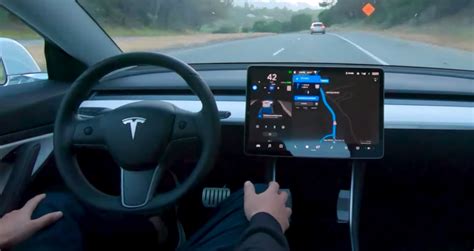The latest incident involving Tesla’s Full Self-Driving (FSD) technology has prompted an intense public discussion about the current state and future prospects of autonomous vehicles. The reported failure of the vehicle to detect a moving train even with visible signals highlights the ongoing challenges these systems face in real-world scenarios that demand split-second decisions. This incident is a stark reminder that while technology has made remarkable strides, it is still far from perfect when it comes to replacing a human’s multi-sensory capabilities.
A key point brought up in the discussion is the relative limitations of FSD technology, which relies predominantly on visual inputs. Unlike human drivers who use a combination of vision, sound, smell, and intuition based on past experiences and environmental cues, the current FSD system is restricted by its sensory inputs. For example, a commenter noted that spotting flashing lights amidst heavy fog is something any alert human would adjust their driving for, by slowing down or stopping if necessary. However, as seen in this case, the automated system continued at a pace inappropriate for the conditions.
The conversation also drew attention to an essential aspect of autonomous driving technology—the need for redundancy and a blend of various sensory technologies. Some commenters argued that to compensate for the absence of human sensory inputs like smell and sound, advanced tech like LiDAR (Light Detection and Ranging) and radar should complement vision systems. Nevertheless, there are intrinsic limitations to these technologies, especially under challenging weather conditions such as fog, snow, or heavy rain, which can distort radar and LiDAR readings.
Another interesting angle explored in the comments is how drivers interact with these autonomous systems. Many Tesla users seem to trust implicitly in the technology, sometimes overlooking their responsibility to remain alert. Critics argue that promoting the technology as ‘Full Self-Driving’ is somewhat misleading as it may create a false sense of security among users. Legally and ethically, drivers are required to remain vigilant even when FSD is engaged, yet incidents like these suggest that the reliance on automation can dull the driver’s reflexes and decision-making abilities.
The debate extended to how regulations and updates play a critical role in the development and deployment of such technologies. Some argued that each update may fix some problems but could also introduce new issues, which necessitates rigorous and continual testing under various conditions before declaring the technology safe for widespread use. Tesla’s approach of frequent over-the-air (OTA) updates is seen as both an advantage in terms of swift innovation and a potential risk if not thoroughly vetted.
Given these complexities, it’s clear that while autonomous driving technology is advancing, its integration into everyday use without adequate safeguards can be dangerous. Commenters highlighted the necessity for regulatory bodies to step in and set stringent safety standards and testing protocols. They also called for better public awareness about the limitations of current technologies so that users can make informed decisions about when and how to use these features safely.
In conclusion, the incident with Tesla’s FSD technology and the moving train underscores a broader conversation about the interplay between human intuition and machine capabilities. As we continue to push the boundaries of what autonomous systems can achieve, it becomes imperative to maintain a balanced perspective—acknowledging the impressive advancements while rigorously addressing their limitations. The road to fully autonomous driving is fraught with challenges, and navigating it will require not just technological innovations but also robust regulatory frameworks and a deep understanding of human behavior in tandem with automated systems.


Leave a Reply